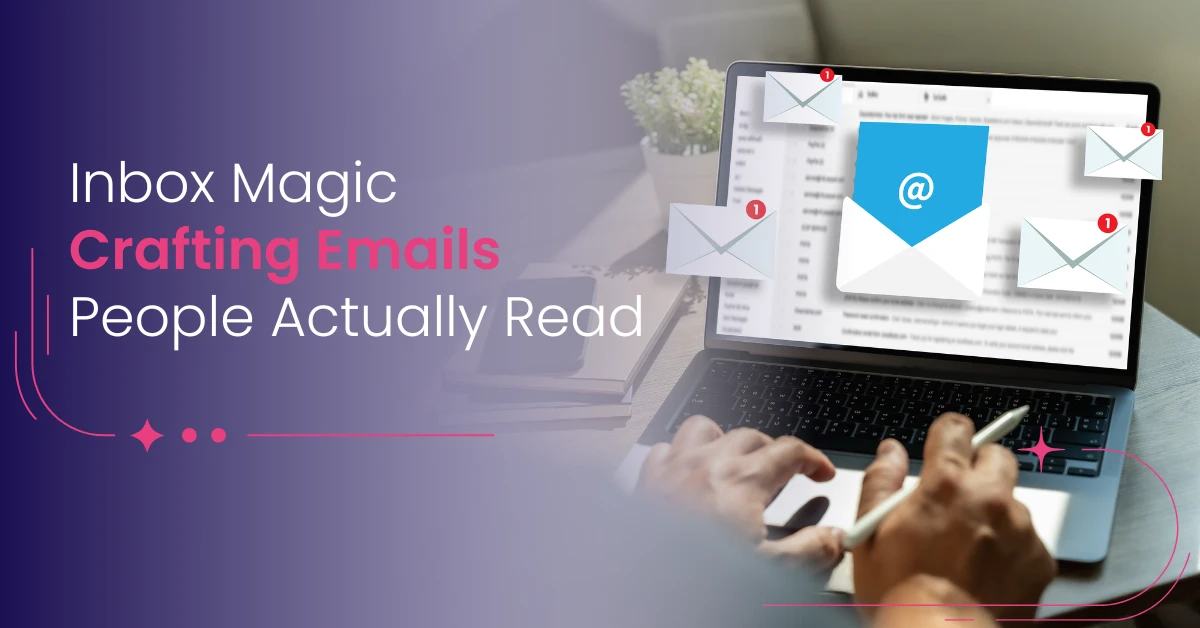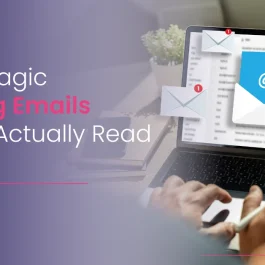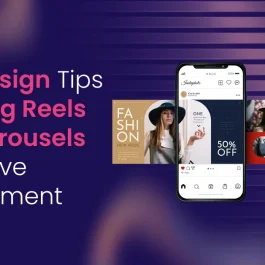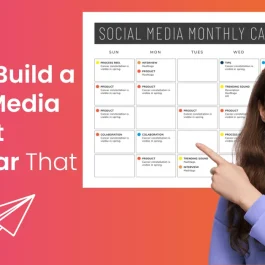5 min read
Table of Contents
Introduction to Effective Emails
Writing emails that keep readers’ attention is essential for good communication. It requires skill and smart email strategies. Craft subject lines that catch the eye and use clear, simple language. This helps your message stand out in crowded inboxes and encourages replies.
Good emails meet readers’ needs. They use a friendly tone and provide consistent value to maintain interest. Personalizing messages, clear calls to action, and breaking up long paragraphs make emails easier to read and more engaging.
Ready to improve your email campaigns? Contact Varun Digital Media today for a custom strategy tailored to your business goals.
Crafting a Compelling Subject Line
A strong subject line grabs attention and motivates readers to open your email. Keep subject lines under 45 characters to avoid being cut off on phones. Use action words or questions to prompt quick responses.
Personalize subject lines with the reader’s name or company to build connection and increase open rates by up to 26%. Use preheader text that complements the subject line to improve inbox previews. Test different subject lines with A/B testing to find what works best. Sending emails in the morning also boosts open rates.
Writing Effective Emails
Writing emails well means understanding what readers want. Use a friendly tone to build trust and encourage replies. Write as if you are talking to a friend to sound natural and relatable.
Start with a strong opening paragraph to catch attention. Clearly state the purpose early and outline what you will cover. Keep emails short—about 75 to 100 words often get the best responses.
Use stories and examples to make emails interesting. Make the reader the hero to increase engagement. Put key information first using the inverted pyramid style so readers don’t miss important points.
Personalize emails by including the reader’s name or company. Explain complex information clearly and why it matters. Think like the reader to better address their feelings and needs.
Add a clear call-to-action (CTA) that tells readers what to do next. Provide context to encourage replies. Mention past conversations to add value and show progress. Include links to useful content to offer more value and invite clicks. Create emails that inspire readers to act—whether to buy, sign up, or share.
Start growing your business with our digital marketing expertise—reach out to Varun Digital Media now.
Email Structure and Format
Well-structured emails get read and responded to more often. Start with a clear subject line that reflects the email’s content. The first paragraph should quickly explain why you’re writing and what action you want the reader to take. Keep paragraphs short and use bullet points only for important lists, making emails easier to scan, especially on mobile devices.
Focus on one main idea and avoid unnecessary details. Readers appreciate concise emails that get to the point and respect their time. Write in a friendly, conversational tone as if speaking to one person, making your message relatable. Include a clear call-to-action (CTA)—whether it’s to reply, click a link, or share—and specify if a prompt response is needed.
Add useful links or resources when relevant, but don’t overload the message. Prioritize what matters most to your readers. Always proofread for grammar and spelling to show respect for your audience. Using email templates can save time and keep your style consistent. Whether using newsletters or tools, focus on clear, direct emails that get opened, deliver value, and build strong connections.
Contact us today to craft emails that truly connect and convert.
Sample Call-to-Action (CTA) Phrases
Here are some examples of clear CTAs you can use or adapt:
- Book a call now
- Download your free guide
- Reply to this email with your thoughts
- Register today to secure your spot
- Click here to learn more
- Share this with a friend who might benefit
- Subscribe for weekly tips
- Claim your discount before it expires
- Join our community now
- Start your free trial today
Use action words that encourage readers to act immediately or gain a benefit.
Achieving Results with Email Marketing
To succeed with email marketing, understand your audience and apply smart strategies. Don’t just write emails—speak to what readers want and need.
Start with a short, clear subject line that stands out in busy inboxes. Use tools to segment your list and send emails tailored to each group. This makes emails feel personal and increases engagement.
Focus every part of your message on your readers to get the best results.
Get a free consultation from Varun Digital Media and turn your email marketing into a powerful growth engine.
The Role of Personalization in Email Marketing
Personalization helps emails get noticed and replied to. Use the reader’s name in subject lines and greetings to make emails feel direct and personal.
Tailor content to each reader’s interests so they feel you are speaking to them individually.
Break long paragraphs with bullet points to keep emails short and easy to read. Show how news or updates matter to the reader.
Emails that feel like real conversations get more replies and keep readers interested.
Let Varun Digital Media help you personalize your emails for maximum impact—contact us today.
Experimenting with Different Email Formats
Try different email styles to see what your readers prefer. Whether newsletters, time-sensitive offers, or personal notes, keep content short and clear.
Use email tools for attractive designs or plain text for a personal touch—clarity is key.
Add links to your site or other resources to provide more information and boost interest.
Monitor which styles get the best responses and refine your email strategies to create emails that work and meet your goals.
Start crafting emails your audience loves —
one subject line at a time.
Frequently Asked Questions (FAQs)
1. How can I make sure my emails get opened?
Write clear, strong subject lines that match the email’s content. Add the reader’s name and send emails at optimal times, like mornings.
2. What is the ideal length for an effective email?
Emails of 75 to 100 words usually get better replies. Keep emails short and focused on the main message to respect readers’ time.
3. How important is the tone of my email?
A friendly, conversational tone makes emails feel personal and easy to read. This builds trust and encourages replies.
4. Should I include a call-to-action (CTA) in every email?
Yes. A clear CTA guides readers on what to do next. Whether to reply, click, or share, make CTAs simple and direct.
5. How often should I send emails to my subscribers?
Send emails regularly to keep readers interested and your list clean. At least once every three months, but monthly or biweekly is better. Regular emails help avoid spam filters.
6. What is the best way to structure my emails?
Start with a clear subject and strong opening paragraph. Use short paragraphs and bullet points to highlight key information. End with a clear CTA and helpful links if needed.
7. How can I improve my subject lines?
Test different subject lines with A/B testing. Use action words, create urgency, and keep lines short to avoid being cut off.
8. What should I avoid when writing emails?
Avoid long paragraphs, difficult words, and overly formal style. Don’t focus only on yourself; focus on what readers want. Avoid sending emails late in the day when replies are less likely.
9. How can I encourage readers to reply to my emails?
Ask questions and use friendly language that invites responses. Treat readers as individuals to encourage conversation.
10. Are follow-up emails effective?
Yes. Polite reminders or follow-ups often get more replies, especially when emails get lost in busy inboxes. These “pings” help busy readers and are usually appreciated.
Published: October 27th, 2025




